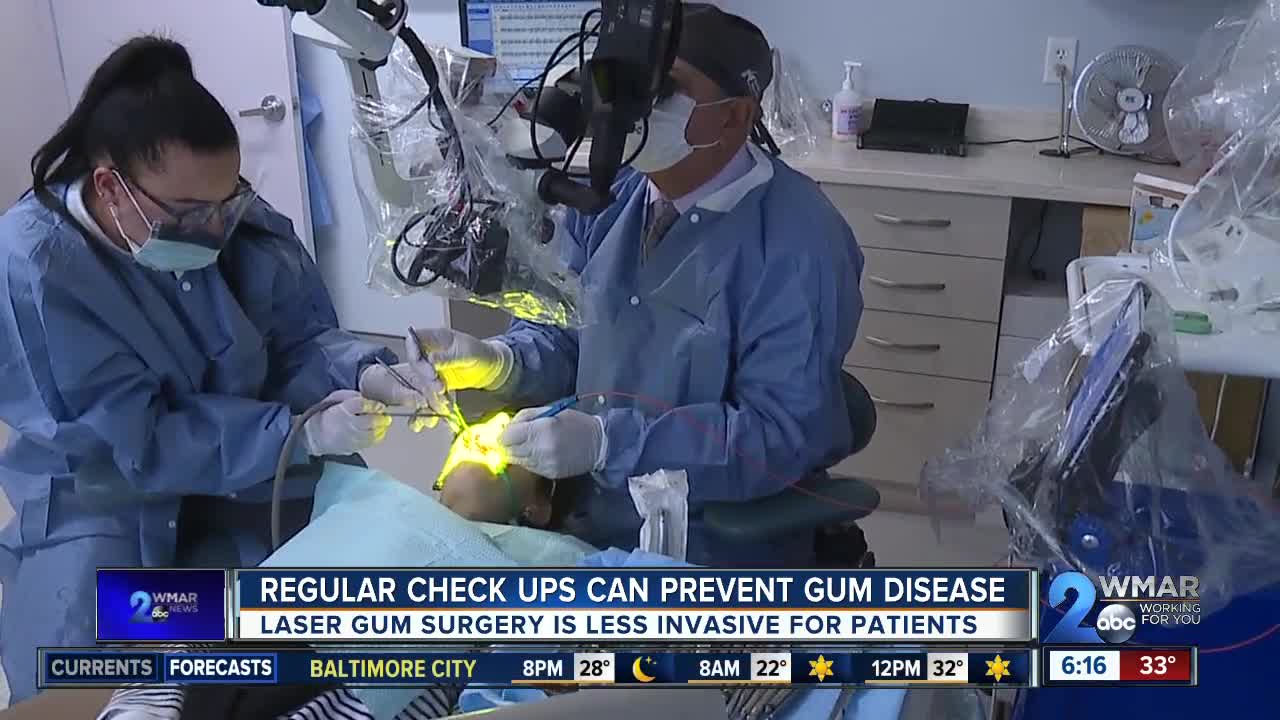TOWSON, Md. — February is Gum Disease Awareness Month, something many tend to overlook.
Dr. Jim Kassolis explains how gum disease happens when “bacteria collects along the gum line and starts traveling up the tissue. As it does that it causes a little localized tissue infection then it starts to eat away at the bone that holds the tooth in the mouth.”
So gum diseases can cause your teeth to fall out. It also can spread outside your mouth.
"The same bacteria that causes gum disease gets into the blood stream and go to the heart and embed themselves in the arteries of the heart and directly cause coronary heart disease,” he said.
That’s why Harper Johnston decided to finally go see a dentist.
"My father had a heart attack when he was 50 so when I turned 40 I was like I better stop procrastinating," she said. "I better start going to the dentist and all these other healthy things.”
She avoided going to the dentist for five years, because she was so scared, even though she knew something was wrong.
“It was really bad, what they call receding gum line. I was losing a tooth at the same time my younger son was losing his same tooth,” said Johnston.
She’s able to laugh about now since she has her gum disease controlled after getting gum surgery.
"We were able to restore the gums, twice what they were at," she said. "Now I have teeth that will hopefully live as long as I do and my gums are fine and I can smile again!”
Johnston got a laser surgery, called a LANAP Protocol Procedure. A laser goes in your gum and kills the infection and helps with regrowth.
Dr. Kassolis showed some before and after pictures of the bone regrowth following a LANAP procedure, where the bone had receded and then grew back.
An older method is where the gum is physically cut open which is more invasive and a longer recovery time for patients, even though the five year success rate is the same.
“My preference is to do the LANAP in all cases because I know the results that I get and the potential for self-regeneration versus the gum surgery,” said Dr. Kassolis. He said patients prefer this too because there are no stitches and no swelling.
He stressed all of this can be avoided if you prevent this from happening.
“Good check-ups and getting to the problem as early as possible that’s the critical thing. It’s not cure able but it’s definitely controllable,” said Dr. Kassolis.
The only problem he has with both procedures is the cost since both are costly for the patients. He wishes dental plans never broke from medical coverage since oral health can directly impact the rest of your body.




